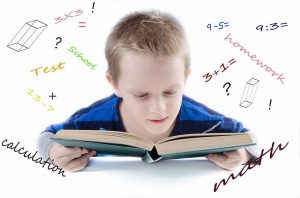Many parents teach their children to count at an early age. However, it is not usually until they start school that children learn ordinal numbers. In part it is because they first need to understand the concept of quantity and have a good command of cardinal numbers before understanding what ordinal numbers are and what they do. To make your work easier, in Infant Stage we explain what ordinal numbers consist of, what their nomenclature is, and we provide you with some educational tools that you can implement at home.
What are ordinal numbers?
 In mathematics, ordinal numbers are those that denote the position of an element with respect to the rest, within the same set. While cardinal numbers offer information about the number of elements that exist in a set, ordinal numbers indicate the order or position they occupy within the group.
In mathematics, ordinal numbers are those that denote the position of an element with respect to the rest, within the same set. While cardinal numbers offer information about the number of elements that exist in a set, ordinal numbers indicate the order or position they occupy within the group.
For example, they are used to classify the results of an athletics competition. In this way, the first to reach the goal occupies the first position while the one who precedes him occupies the second position and the next, the third place. Likewise, ordinal numbers can be useful for numbering the floors of a building, indicating the location of people in a row, or naming anniversaries and recurring events. They are also used for the date, especially for the first day of each month.
How are ordinal numbers written?
However, when it comes to writing in letters, each ordinal number has its own name. The name not only denotes its position in the set, but allows it to be related to its cardinal pair. For example, in the case of number 1 the ordinal would be first, for number 2 it would be second, for 3, third and so on. Considering their writing in letters, ordinal numbers can be considered simple or compound.
Simple ordinals are numbers from 1 to 10, as well as those numbers that correspond to tens, that is, from 20 to 90, and to hundreds, from 100 to 900. Numbers from 1000 that are formed are also simple ordinals. adding the ending “th”. Meanwhile, the rest are considered compound ordinals and are written by juxtaposition or fusion of the simple forms, as in the case of thirteenth or thirty-ninth.
 Also, there are some special rules for writing ordinal numbers:
Also, there are some special rules for writing ordinal numbers:
- The first and third ordinals are shortened in the forms “first” and “third” when they precede a masculine noun, are part of compound ordinals, or are preceded to an adjective. This, except when it comes to ordinals that accompany feminine nouns, in which case there is no variation.
- The ordinals that correspond to the numbers 11 and 12 can be written in two ways, either eleventh and twelfth or eleventh and twelfth.
- The ordinals of the first and second hundreds can be written together or separately, as in the case of thirteenth or thirteenth. In this case, if they are written together they do not have an accent, but if they are written separately they do keep the accent.
3 simple activities to teach ordinal numbers to children
Learning ordinal numbers by heart can be boring and monotonous. On the other hand, if you use fun educational activities to teach ordinal numbers to children, you will not only arouse their interest and curiosity, but you will also help them learn them earlier and better. Here are some ideas that you can put into practice at home:
Use the rankings
A simple and fun way to motivate children to learn ordinal numbers is to ask them to classify different sets according to the position of their elements. Whether it is a box of toys, the shoes in the closet or cards with different outfits, the idea is that the little ones order the elements according to the ordinal sequence.
Make the game your ally
Children love to have fun, so they will surely be delighted to be entertained as they color using only the third, fifth, and sixth color from the box. They can also play hitting marbles based on their position, for example third and fifth from the wall. And, for those who like to tell stories, another idea is to motivate them to create a story with the third and fourth toy on the shelf as the main characters.
Identify ordinals in practice
Using examples from everyday life for children to exercise ordinal numbers will not only help them to reinforce them but also to discover their usefulness. If you are in the supermarket, you can ask your children what position you occupy in line or if you are cooking at home, you can ask them to hand you the second glass from left to right. The idea is that they become familiar with ordinal numbers through small daily actions.
